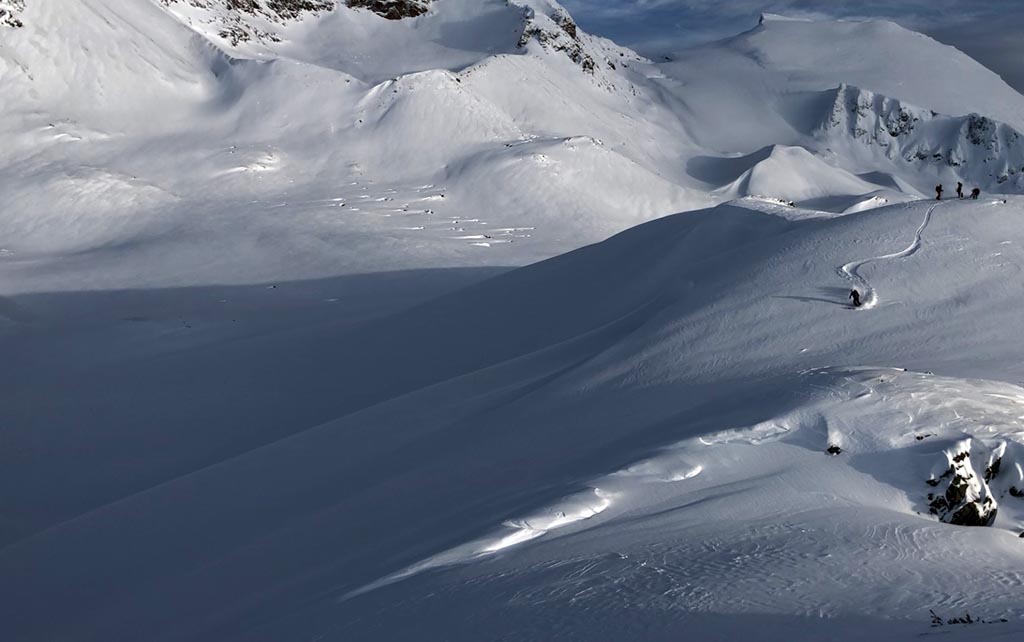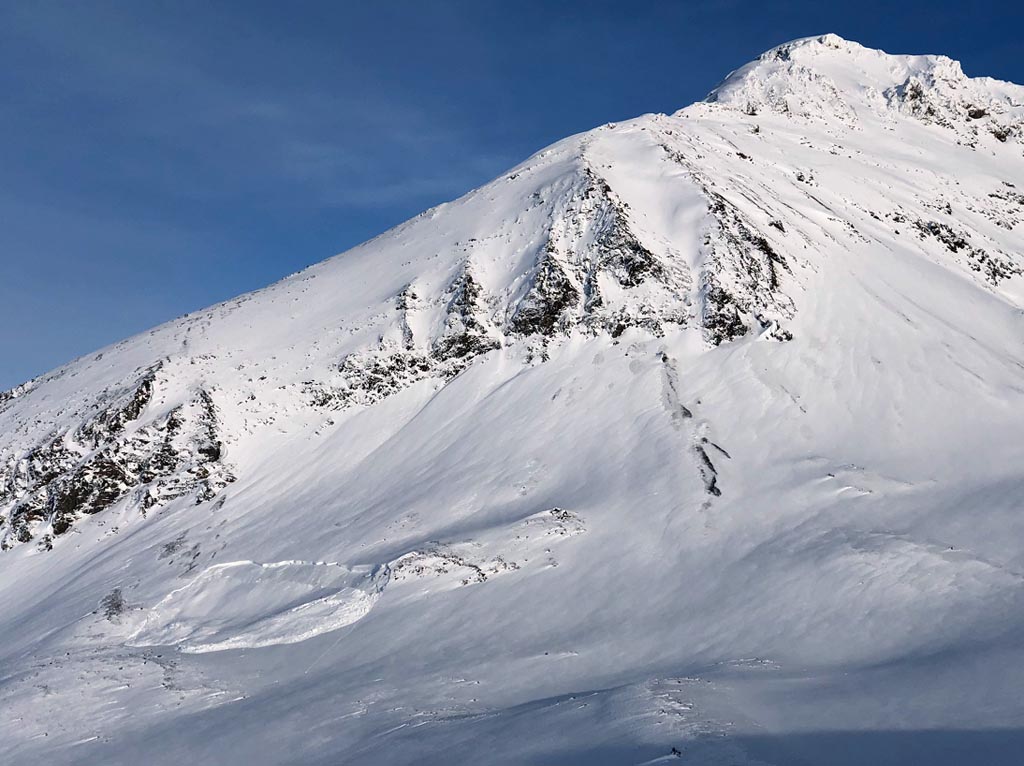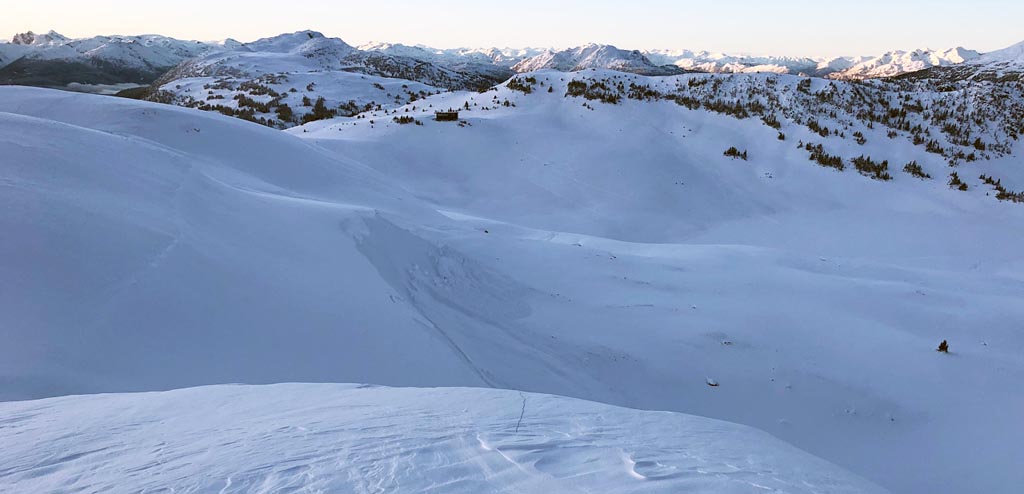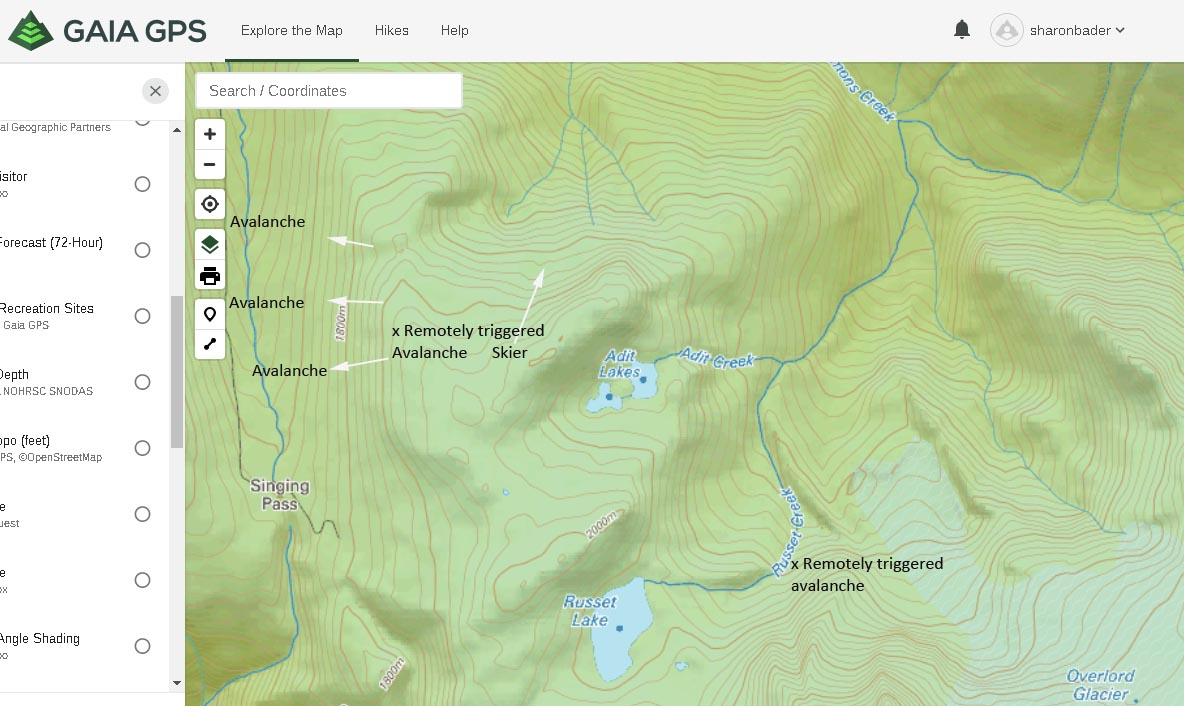Lee Lau | January 3, 2020 | Avalanche
Video by Chris M – Skier is not me but another person; footage is used with permission
It’s said that a picture tells a thousand words; perhaps some avalanche near-miss video will tell several thousand. This MIN report is described as a near-miss from a shallow-angled slope in the Canadian Rockies. One may ask what relevance that has to the British Columbia coast a thousand kilometers and several ranges away? We on the Coast are a complacent bunch. Usually, we have a deep snowpack. Whatever persistent weak layers develop in the Coastal snowpack are bridges and buried and become irrelevant.
This is not the case this year. Whistler, in particular, has had a snow-drought. Particularly at ridgetops, snowpacks are shallow. Just today on Flute I found a snowpack of 95cms depth of which the first 35cms had faceted. Faceted snow is weak snow. The 60cms overlying that is just a recipe for Russian Roulette disaster masking the inherent weakness of the snowpack. It means that the Whistler snowpack will behave like the Canadian Rockies. For an example of what I mean look at the video. Its a lower angled slope but still one skier triggered a slide and simultaneously sympathetically remotely triggered another slide. While the skiers were separated initially one got going a bit faster than the other and closed spacing. Fortunately, both skiers had the requisite awareness to know how to avoid the debris and/or to trigger more slides.
Relevant links
- Wayne Flann Avalanche Blog
- Avalanche Canada
- Special Avalanche Warning for Mountains Across Southern BC and Alberta
Cowboy Ridge Avalanche
A classic example of the current variability and instability of the Whistler snowpack is a recent avalanche on Cowboy Ridge. Per Johannes Esterle’s MIN report the slide was a meter (ie the entire snowpack failed), and ran downslope another 200m. From pictures, the slide is approximately 500m in width. That is a massive amount of debris entrained
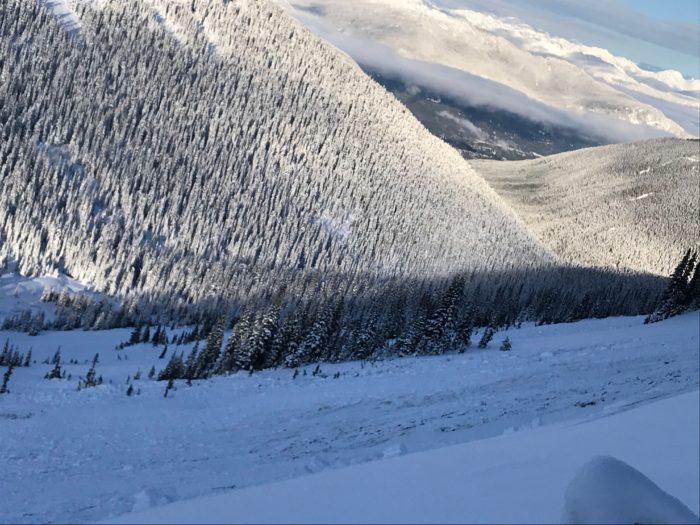
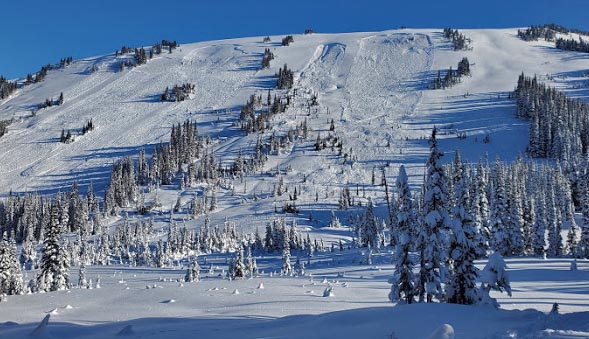
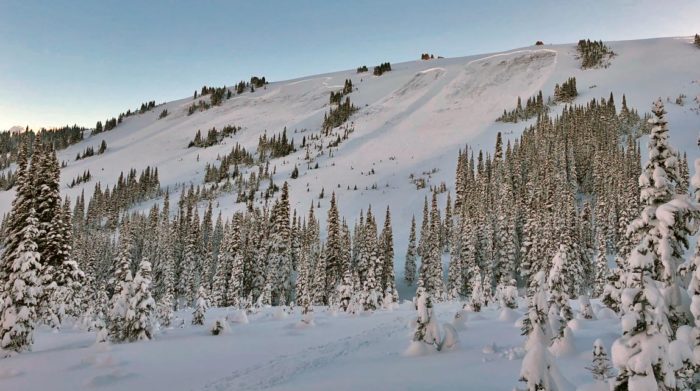
This is a spooky avalanche in that Cowboy Ridge in summer is a heather-covered slope. Its smooth planar nature means that snow usually adheres to its W and NW-facing slopes forming a good stable base for good skiing throughout a good chunk of the season. Because of its proximity to Whistler area boundaries (the top is reachable easily in 2 hours or so) Cowboy is considered one of the Whistler lift-served backcountry go-to areas.
Cowboy is trafficked enough that it reflects Whistler-area Coastie skier complacency. It’s notorious for sloppy, unsafe travel habits with multitudes of tourers putting “suicide” skin tracks straight up avalanche paths right below convex rollovers where someone heading downhill wouldn’t have knowledge of uphill traffic in kill zones until cresting rollovers.
It’s worthwhile noting that these suicide skin tracks are now all buried under tons of avalanche debris.
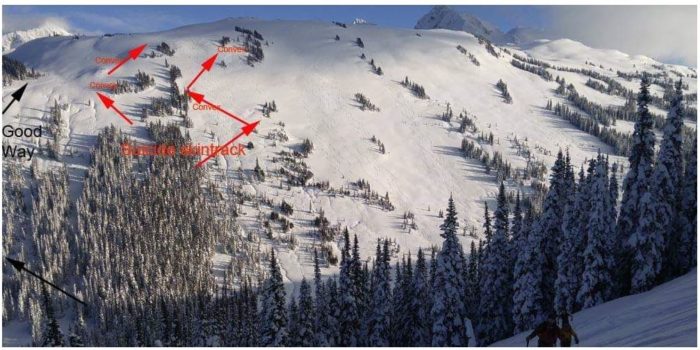
A hair-trigger snowpack
Sky Sjue was up in the Cowboy Ridge area with a group. He speculates that his group skiing may have triggered the avalanche. If so, that’s even more alarming as his group was many hundreds of meters away from Cowboy Ridge. By any definition, this would constitute a dangerous hair-trigger snowpack.
Here’s the line of thought as conveyed by Sky:
